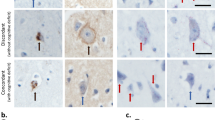Abstract
The molecular pathology underlying transthyretin (TTR)-related amyloidosis is largely unknown. It is possible that a common factor in the amyloidogenesis process exists among the different forms; this common factor can involve changes produced by mutations in the three-dimensional structure of TTR, rendering it prone to deposition as amyloid. This amyloidogenic potential, together with other yet unidentified factors, contribute to amyloid deposition. The factors that trigger fibril formation and/or neurodegeneration in TTR-related amyloidosis present central questions for which there are still no available clues. We recently showed in vitro that TTR fibrils trigger NF-κB activation, and subsequent studies identified some inflammatory and apoptotic pathways opening perspectives to understand the neurodegeneration process in familial amyloidotic polyneuropathy (FAP). It is current opinion that the modified TTR represents an amyloidogenic intermediate, which integrates the fibril structure; analyses of FAP fibrils have proved that TTR in the fibrils maintains a β-conformation and have suggested that the TTR monomer is the building block in fibrils. This concept has been questioned recently by investigators, and only future studies on native and synthetic TTR fibrils using high-resolution structural techniques will further elucidate fibril structure and the aggregation pathway. Modulators responsible for phenotypic diversity can be addressed by mice transgenic for different human TTR mutations. Different lines are now available; incomplete penetrance and environmental influence on the deposition of mutant TTR has been observed. Therefore, these animals constitute important tools to address modulators of phenotypic expression and pathophysiological consequences of amyloid deposition at cellular/molecular levels. They are pivotal for testing potential drugs for TTR amyloidosis as well.
Similar content being viewed by others
References
Andrade C. (1952) A peculiar form of peripheral neuropathy. Familial atypical generalized amyloidosis with special involvement of the peripheral nerves. Brain 75, 408–427.
Arakis S. (1984) Type I familial amyloidotic polyneuropathy (Japanese type). Brain Dev. 6, 128–133.
Araki S., Shigehiro Y., Murakami T., Watanabe S., Ikegawa S., Takahashi K., and Yamamura K. (1994) Systemic amyloidosis in transgenic mice carrying the human mutant transthyretin (met30) gene. Mol. Neurobiol. 8, 15–23.
Blake C. C. F., Geisow M. J., Swan I. D. A., Rerat C., and Rerat B. (1974) An X-ray study of the subunit structure of prealbumin. J. Mol. Biol. 61, 217–224.
Cardoso I., Goldsbury C. S., Müller S. A., Olivieri V., Wirtz S., Damas A. M., et al. (2002) Transthyretin fibrillogenesis entails the assembly of monomers: a molecular model for in vitro assembled transthyretin amyloidlike fibrils. J. Mol. Biol. 317, 687–699.
Combs C. K., Karlo J. C., Kao S. C., and Landreth G. E. (2001) β-Amyloid stimulation of microglia and monocytes results in TNF-α-dependent expression of inducible nitric oxide synthase and neuronal apoptosis. J. Neurosci. 21, 1179–1188.
Hofmann M. A., Drury S., Fu C., Qu W., Taguchi A., Lu Y., et al. (1999) RAGE mediates a novel proinflammatory axis: a central cell surface receptor for S100/calgranulin polypeptides. Cell 97, 889–901.
Khono K., Palha J. A., Miyakawa K., Saraiva M. J., Ito S., Blaner W. S., et al. (1997) Analysis of amyloid deposition in a transgenic mouse model of homozygous familial amyloidotic polyneuropathy. Am. J. Pathol. 150, 1497–1508.
Munar-Qués M., Costa P. P., Saraiva M. J. M., Farré C. V., Bernat C. M., Luna C. C., and Alberti J. F. F. (1997) Familial amyloidotic polyneuropathy. TTR Met 30 in Majorca (Spain). Amyloid 4, 181–186.
Radi R., Peluffo G., Alvarez M. N., Naviliat M., and Cayota A. (2001) Unraveling peroxynitrite formation in biological systems. Free Radic. Biol. Med. 30, 463–488.
Saraiva M. J. M. (2001) Transthyretin mutations in hyperthyroxinemia and amyloid diseases. Hum. Mutat. 17, 493–503.
Saraiva M. J. M., Birken S., Costa P. P., and Goodman D. S. (1984) Amyloid fibril protein in familial amyloidotic polyneuropathy, Portuguese type. Definition of molecular abnormality in transthyretin (prealbumin). J. Clin. Invest. 74, 104–119.
Sebastião M. P., Saraiva M. J., and Damas A. M. (1998) Th ecrystal structure of amyloidogenic Leu55 → Pro transthyretin variant reveals a possible pathway for transthyretin polymerization into amyloid fibrills. J. Biol. Chem. 273, 24715–24722.
Soprano D. R., Herbert J., Soprano K. J., Schon E. A., and Goodman D. S. (1985) Demonstration of transthyretin mRNA in the brain and other extrahepatic tissues in the rat. J. Biol. Chem. 260, 11793–11798.
Sousa M. M., Cardoso I., Fernandes R., Guimaraes A., and Saraiva M. J. (2001) Deposition of transthyretin in early stages of familial amyloidotic polyneuropathy: evidence for toxicity of nonfibrillar aggregates. Am. J. Pathol. 159, 1993–2000.
Sousa M. M., Du Yan S., Fernandes R., Guimaraes A., Stern D., and Saraiva M. J. (2001) Familial amyloid polyneuropathy: receptor for advanced glycation end products-dependent triggering of neuronal inflammatory and apoptotic pathways. J. Neurosci. 21, 7576–7586.
Sousa M. M., Fernandes, R., Palha J. A., Taboada V., Vieira P., and Saraiva M. J. (2002) Evidence for early cytotoxic aggregates in transgenic mice for human transthyretin Leu55Pro. Am. J. Pathol. 161, 1935–1948.
Yan S. D., Chen X., Fu J., Chen M., Zhu H., Roher A., et al. (1996) RAGE and amyloid-beta peptide neurotoxicity in Alzheimer’s disease. Nature 382, 685–691.
Yan S. D., Roher A., Schmidt A. M., and Stern D. M. (1999) Cellular cofactors for amyloid beta-peptide-induced cells stress. Moving from cell culture to in vivo. Am. J. Pathol. 155, 1403–1411.
Yi S., Takahashi K., Naito M., Tashiro F., Wakasugi S., Maeda S., et al. (1991) Systemic amyloidosis in transgenic mice carrying the human mutant transthyretin (Met30) gene. Pathologic similarity to human familial amyloidotic polyneuropathy, type I. Am. J. Pathol. 138, 403–412.
Author information
Authors and Affiliations
Corresponding author
Rights and permissions
About this article
Cite this article
Saraiva, M.J., Sousa, M.M., Cardoso, I. et al. Familial amyloidotic polyneuropathy. J Mol Neurosci 23, 35–40 (2004). https://doi.org/10.1385/JMN:23:1-2:035
Received:
Accepted:
Issue Date:
DOI: https://doi.org/10.1385/JMN:23:1-2:035




